Engineered Hardwood Flooring Manufacturer
Engineered hardwood flooring is a type of wood flooring that is made up of multiple layers of wood or wood-like materials. The top layer is a thin veneer of real hardwood, while the core layers are made of plywood or high-density fiberboard.
It is a durable and attractive flooring option that can add value to a home and enhance its style.
3 Ply VS Multi-Ply Engineered Flooring
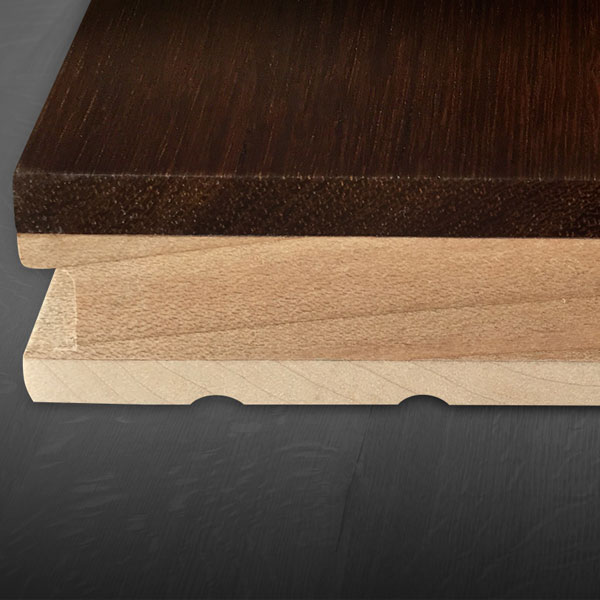
3-ply engineered hardwood flooring typically consists of three layers of wood, with a layer of hardwood veneer on the top and two layers of plywood or other wood materials on the bottom.
The top layer of hardwood veneer is usually around 3/16 inches thick and is made from a variety of wood species, such as oak, maple, or cherry.
The bottom layers are typically made from a softer wood, such as pine or poplar, and are used to provide stability and support to the flooring.
In terms of installation, 3-ply engineered hardwood flooring is usually easier to install than solid hardwood. It can be installed over a variety of surfaces, including concrete, and it can be glued down, stapled, or floated. It is also often more affordable than solid hardwood flooring, making it a more budget-friendly option for homeowners.
Multi-ply engineered wood flooring, on the other hand, can consist of four or more layers of wood. These flooring products are typically even more stable and durable than 3-ply engineered flooring, as the additional layers of wood provide additional support and stability.
Like 3-ply engineered flooring, multi-ply engineered flooring also has a top layer of hardwood veneer and bottom layers of plywood or other wood materials.
One of the main benefits of multi-ply engineered hardwood is that it can be installed in areas where solid hardwood cannot, such as over concrete or in areas with radiant heat.
Additionally, multi-ply engineered hardwood flooring is typically more affordable than solid hardwood, making it a more budget-friendly option for those looking to upgrade their floors. It is also more environmentally friendly, as it uses less wood in its production process and can be recycled or reused once it reaches the end of its lifespan.
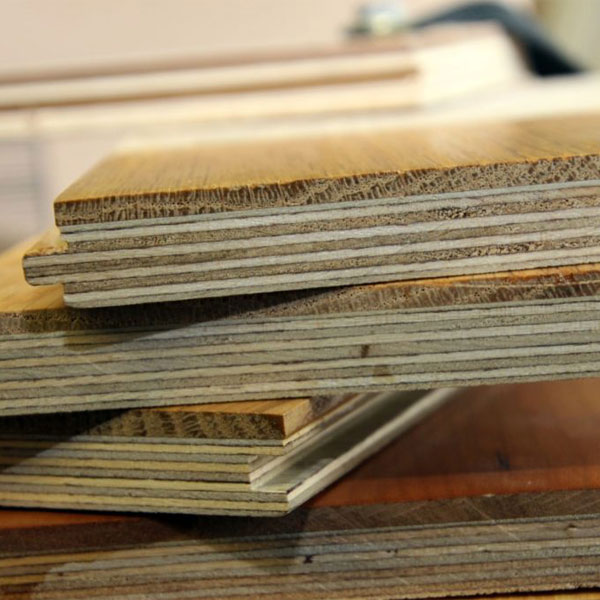
Engineered Hardwood Flooring Size Chart
Types | 3-Layer | Multi-layer |
Wood Species | Oak, Walnut, Birch, Hickory | Oak, Walnut, Teak, ASH, Acacia, Hickory |
Veneer Grade | AB, ABC, ABCD, CDE, CD, EF | AB, ABC, ABCD, CDE, CD, EF |
Length | 300-1900 mm | 300-5000 mm |
Width | 90-190 mm | 70-400 mm |
Veneer Thickness | 3, 4, 6 mm | 0.6, 0.8, 1.0, 2, 3, 4, 5, 6 mm |
Total Thickness | 14, 15 mm | 10, 11, 12, 14, 15, 16, 18, 19, 20, 21 mm |
Plywood | Pine, Poplar, Fir | Eucalyptus, Birch, Pine, Pine+Poplar |
Engineered wood flooring is available in a wide range of wood species, including oak, maple, hickory, birch, cherry and walnut, as well as exotic woods like African mahogany and tigerwood.
It comes in a variety of widths ranging from slim to wide planks and is offered in specialty patterns. Multi-layer engineered wood flooring can support more ranges of dimensions than 3-layer engineered flooring.
Wood Species
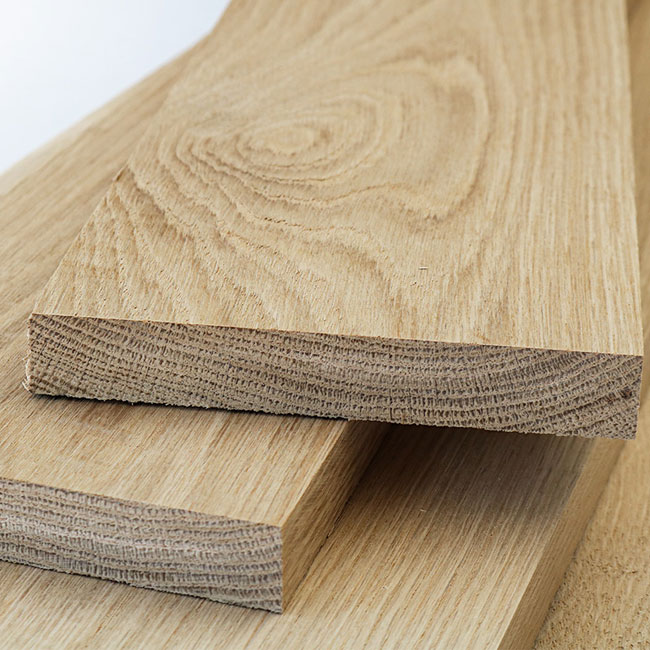
Oak
Oak offers a perfect balance of beauty, character, durability, and affordability. It is a hard, dense popular wood that is resistant to wear and tear. And it comes in a variety of colors and styles.
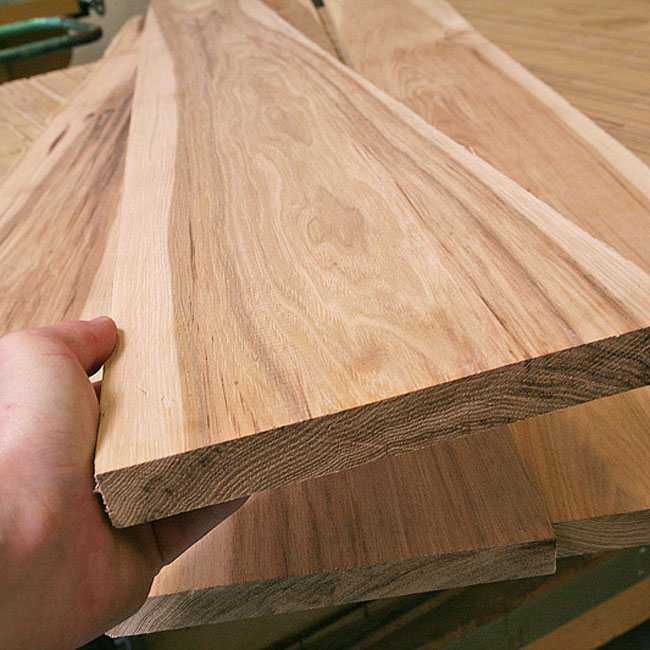
Hickory
Hickory has a ranking of 1820 hardness on the Janka scale. Hickory is known for its toughness, rich color variations, striking character marks, and complex grain patterns.
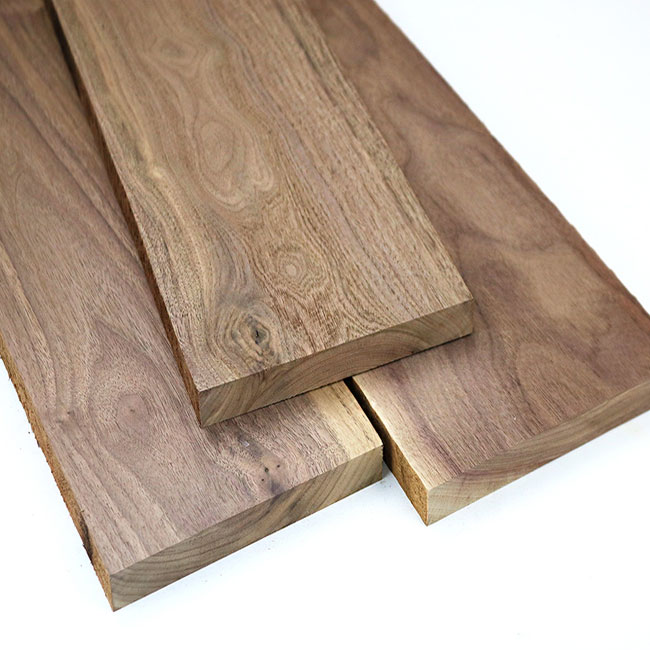
Walnut
Walnut is softer than oak, it has dark mocha heartwood and lighter sapwood. Its softness provides excellent shock resistance, dimensional stability, and complex grain patterns.
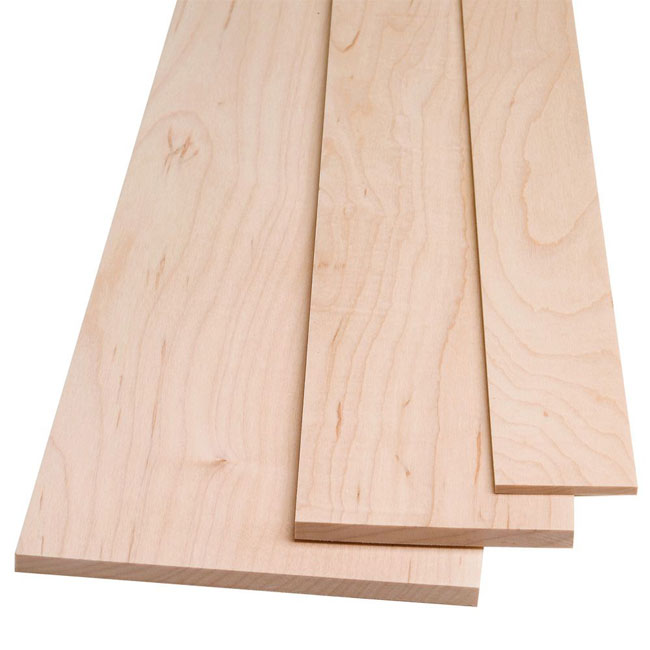
Maple
Maple has a creamy, golden hue and has a fine grain pattern with occasional swirls. Its clean light color makes it ideal for larger open spaces. But maple wood is not suitable for staining.
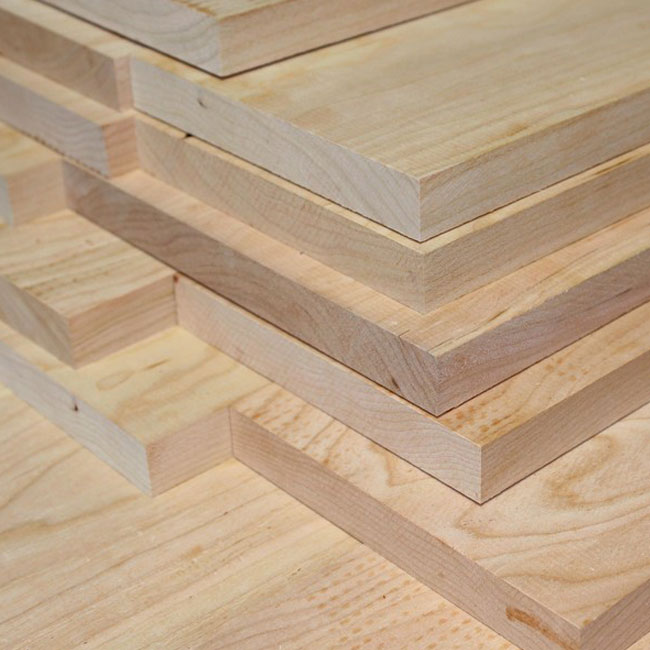
Cherry
Cherry wood has dark or light undertones and appears to have a subtle reddish glow. But these dark colors will fade and darker from sunlight, which means you may need to clean them more often.
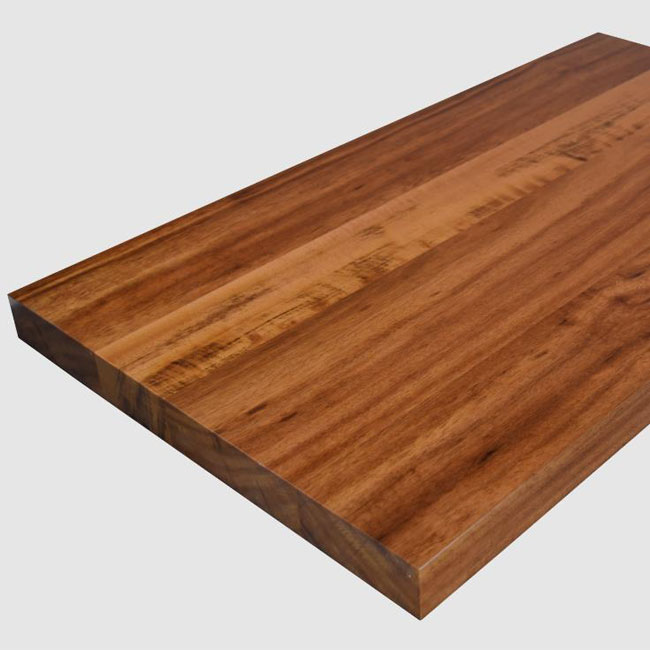
Acacia
Acacia’s Janka hardness ranges between 1700 – 2220. Acacia is more cost-effective than most other wood pieces. It has unique coloring and grain, from light brown to dark brown.
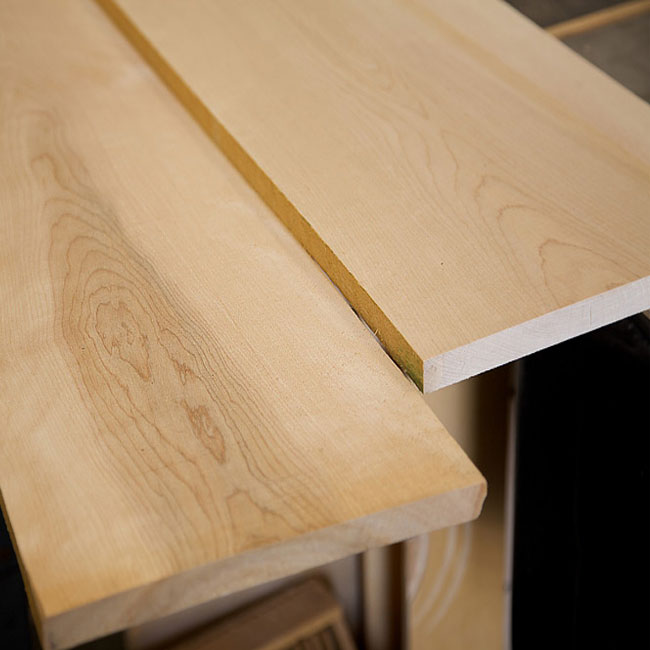
Birch
Birch has a moderate hardness of 1290 Janka Hardness. It’s popular because it has very little grain visibility and uniformity. But it is often mistaken for maple and is difficult to stain.
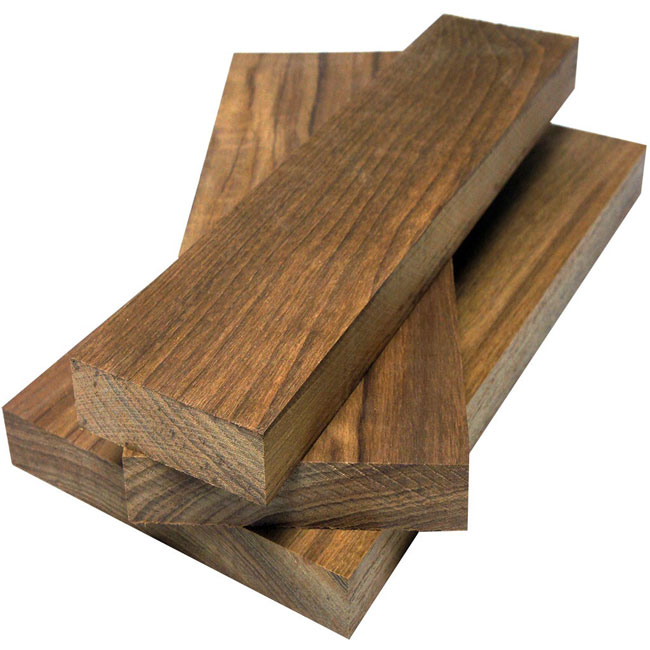
Teak
Teak is one of the hardest species of wood. It is much rarer and more expensive than oak. The teak can be yellow to golden brown. Its grain is straight with some occasional waviness.
Texture & Pattern
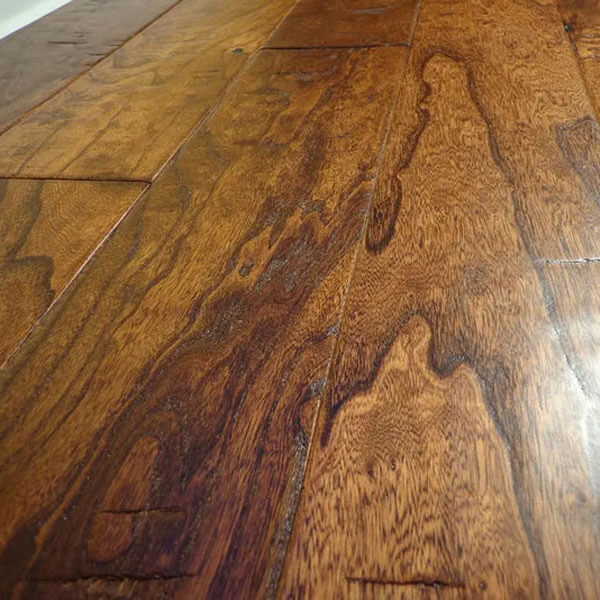
Handscraped
This process involves using a tool to scrape the surface of the wood planks, giving them a rough, textured look. Handscraped hardwood flooring is often made from wood species such as oak, hickory, or maple, and can be finished with a variety of stains and finishes to achieve the desired look.
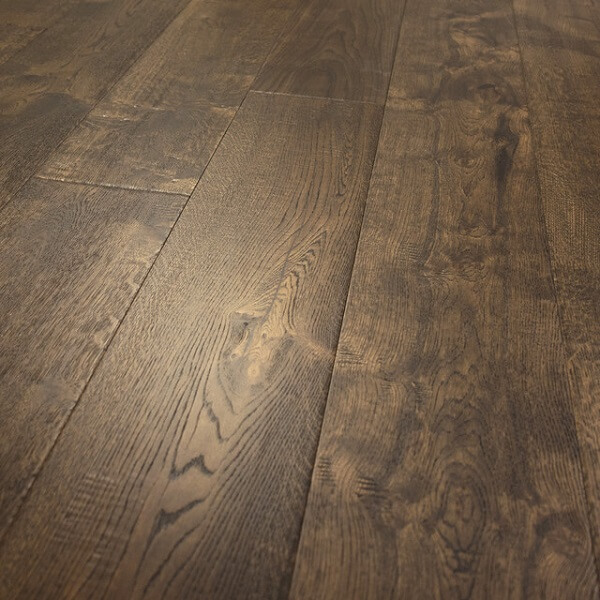
Rustic
Rustic engineered hardwood flooring is a type of engineered hardwood flooring that is designed to have a distressed, rustic look. It may feature knots, cracks, and other imperfections in the wood, as well as a distressed or weathered finish, to give it a natural, rustic appearance.
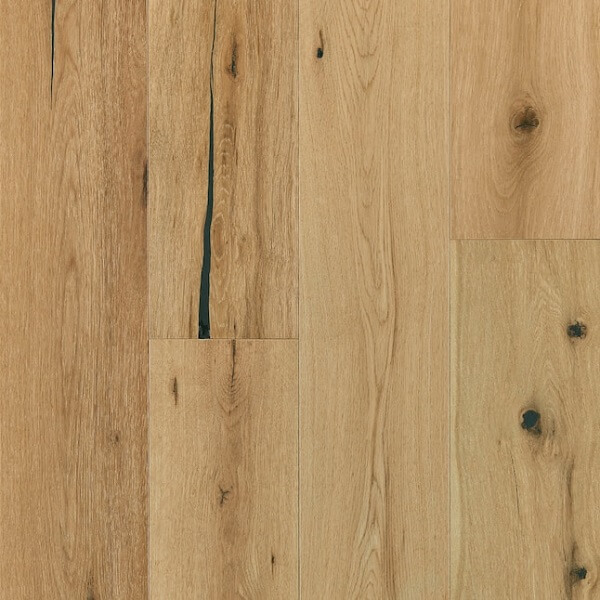
Wirebrushed
Wirebrushed engineered wood flooring is a type of flooring that has undergone a process called wirebrushing. This process involves using a wire brush to scrape and scuff the surface of wood, creating a rough, textured finish. This finish will add character and depth to the wood.
Finishing
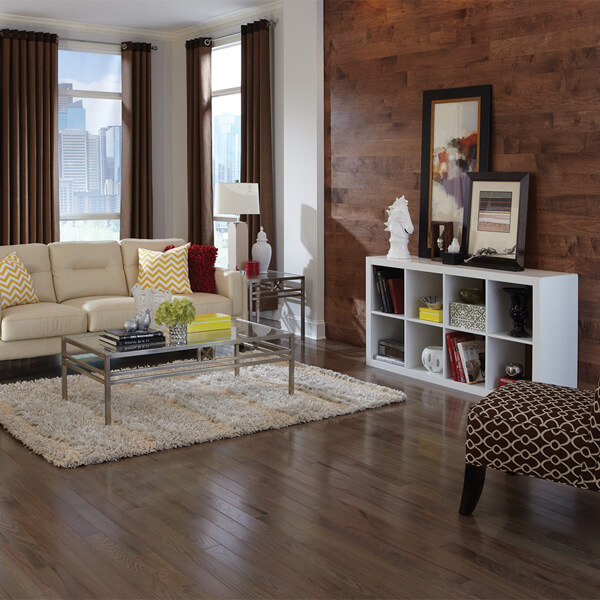
Smoke-finished
The process of smoking is a way to darken and highlight the grain pattern of engineered wood floors, particularly oak. It involves exposing the wood to ammonia fumes in a closed space, which reacts with the tannins and changes the wood’s color. This method is often used on oak to create a darker appearance.
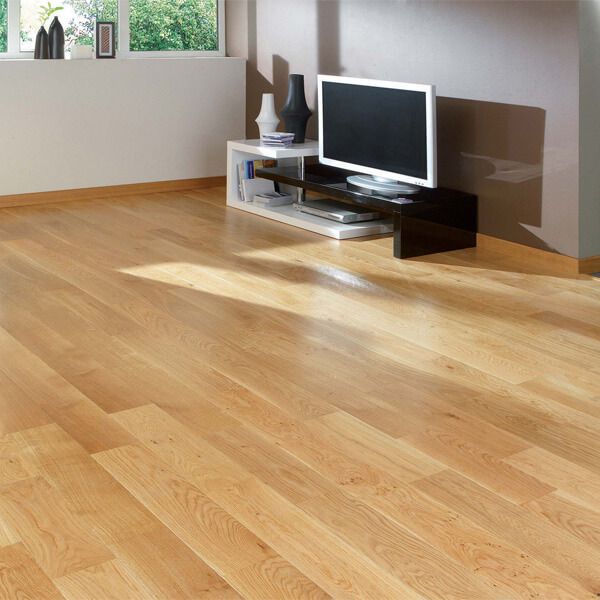
Satin-finished
Satin is the most popular finish for engineered hardwood floors. Engineered wood flooring with a satin finish has a subtle shine, rather than a sharp gloss, that provides a gentle radiance. It reflects a moderate amount of light, making it a more comfortable surface for bare feet, pets, children, and guests.
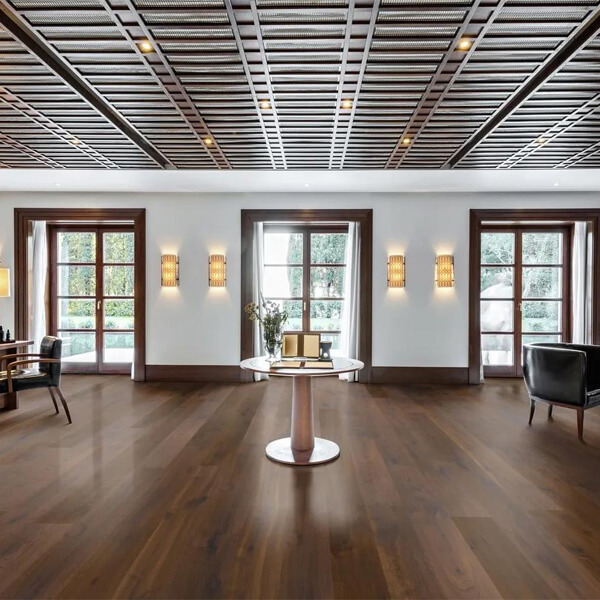
Matte-finished
Matte-finished engineered flooring has a more natural, low-shine appearance that may be desirable in some settings. Matte finish can also help to hide scratches and other imperfections in the flooring better than a high-gloss finish. However, it will require more frequent cleaning and maintenance.
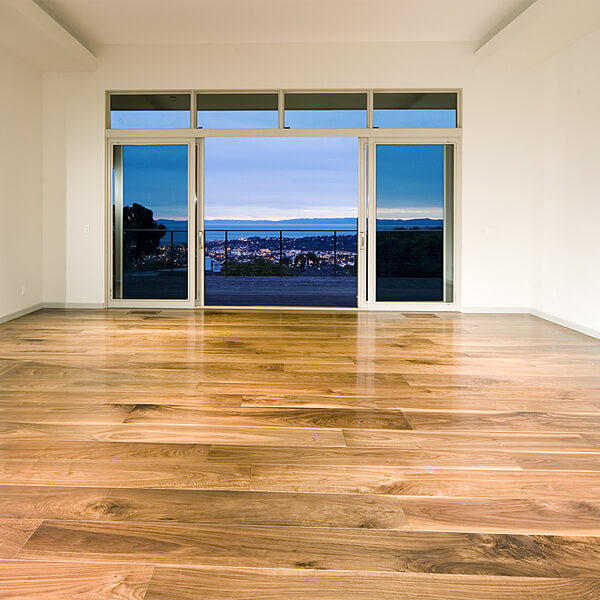
Oil-finished
Oil finishes can be a good choice for engineered hardwood floors, as they can provide a natural, warm look and feel to the wood. They can also be easily repaired and touched up if needed. However, oil finishes can be more time-consuming to apply and require more maintenance than other types of finishes.
